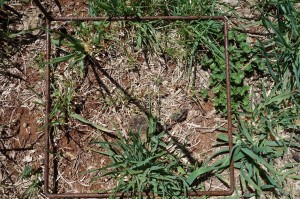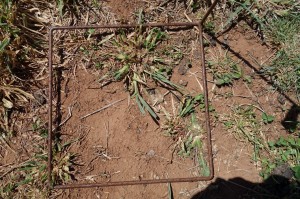Central Tablelands NSW – Environmental Issues
Environmental issues are generally a result of past management practices, such as extensive clearing of trees and the replacement with shallow rooted annuals and sparse perennials. The native pastures on the upper slopes of the landscape are generally fenced into large paddocks that are set-stocked (or have short rest periods) causing degradation in over-utilised patches. This has negative impacts on animal productivity and many natural resource management (NRM) issues as well. Costs to the environment include soil and river salinity, soil acidity, declining soil health and loss of biodiversity. Management changes are needed to improve the profitability and sustainability of these areas.
Soil acidity
Tableland soils are generally acidic. i.e. pH(CaCl2) less than 5.0. Geology of Tableland soils means they can be naturally acidic because they are very old and in a highly weathered state. Agricultural production also increases the rate at which soils acidify through leaching of nitrates and agricultural product removal. The impact of falling soil pH is an increase in the availability of toxic elements such as aluminium and manganese which are toxic to plants and limit pasture growth, production and survival. Further information on management of soil acidity in pastures can be found here.
Erosion and ground cover
Erosion involves the loss of soil material by the movement of wind and water, which is then transported and deposited in other locations. Tablelands pastures that are heavily grazed by domestic livestock or pest animals can have decreased ground cover, which make them susceptible to erosion. The loss of ground cover is also associated with a shift from perennial to annual pasture species. The appropriate level of ground cover to prevent erosion is associated with the steepness of slope and then soil type. Generally 70% ground cover is sufficient for flat or gently sloping land, but higher ground cover levels (80-90%) are needed for steeper classes of land (Costin, Lang). Maintaining ground cover at these levels (together with a minimum 800 kg DM/ha herbage mass) resulted in persistence of native and introduced perennials at all EverGraze Proof Sites, including the Orange Proof Site at Panuara . Further information on managing ground cover with grazing management can be found in the EverGraze Exchange – Nuts and Bolts of Grazing Strategies.
Gully and stream-bank erosion can be reduced by fencing off waterways and limiting access to livestock. For minor drainage lines, the protection of vegetation against vehicle and stock tracks, ploughing or over-grazing is needed.
|
|
|
Biodiversity loss
Clearing of native vegetation threatens the survival of endangered flora and fauna species, communities and populations. Grassy woodlands, grasslands, dry sclerophyll forests and riparian habitat have suffered the largest losses in the area and are now threatened in the Central Tablelands. Identifying high conservation areas in a farm plan will help them be managed appropriately. Light grazing and removing physical disturbance will help with natural regeneration of remnant vegetation. Habitat quality for fauna species can also be maintained by retaining the understorey, for instance by preventing firewood collection. Fencing and revegetation programs can also be used to connect fragmented areas of remnant vegetation. Revegetation may also provide benefits to production, such as providing shelter for lambing. Weed invasion is another threatening process that needs to be managed on the characteristics of individual species. However, decreased pasture competition and disturbance are associated with the invasion of many weeds.
Further information on biodiversity can be found on the Local Land Services website.
Water quality and salinity
Salinity is generally only found in isolated areas of the Central Tablelands. While the overall area is very small, it has potential to have significant offsite impacts due to the salt entering river systems and affecting downstream water users and the environment. There are many differing causes of salinity, including the loss of deep-rooted perennials in the upper slopes. Reduced perennial root systems allows the water table to rise and bring dissolved salts to the surface, which are then concentrated with evaporation. The hydrology of the upper catchments is complex and this simple model does not apply in all situations. Fencing off and vegetating scalded areas with salt tolerant species can reduce erosion and salt export. Also, increasing the area of perennial pastures in the upper catchments may reduce recharge, but a good understanding of the local hydrology and the location of salt loads is important to make sure interventions are effective.
Further information on water quality and salinity can be found on the Central Tablelands Local Land Services website. Regional packages for South West Victoria and North East Victoria/Southern Slopes NSW also provide details on management of salinity and waterlogging for those regions.
Further Information
- Local Land Services – Land and Water
- EverGraze Exchange – the Nuts and Bolts of Grazing Strategies
- Orange EverGraze Proof Site key message – Composition of pastures with a high native perennial component is stable under managed grazing
- Costin AB, Runoff and Soil and Nutrient Losses from an Improved Pasture at Ginninderra, Southern Tablelands, New South Wales, Australian Journal of Experimental Agriculture 31, 533-46
- Lang RD, Pasture management for production and sustainability, Agronomy Conference, 1998



